Current Exhibition
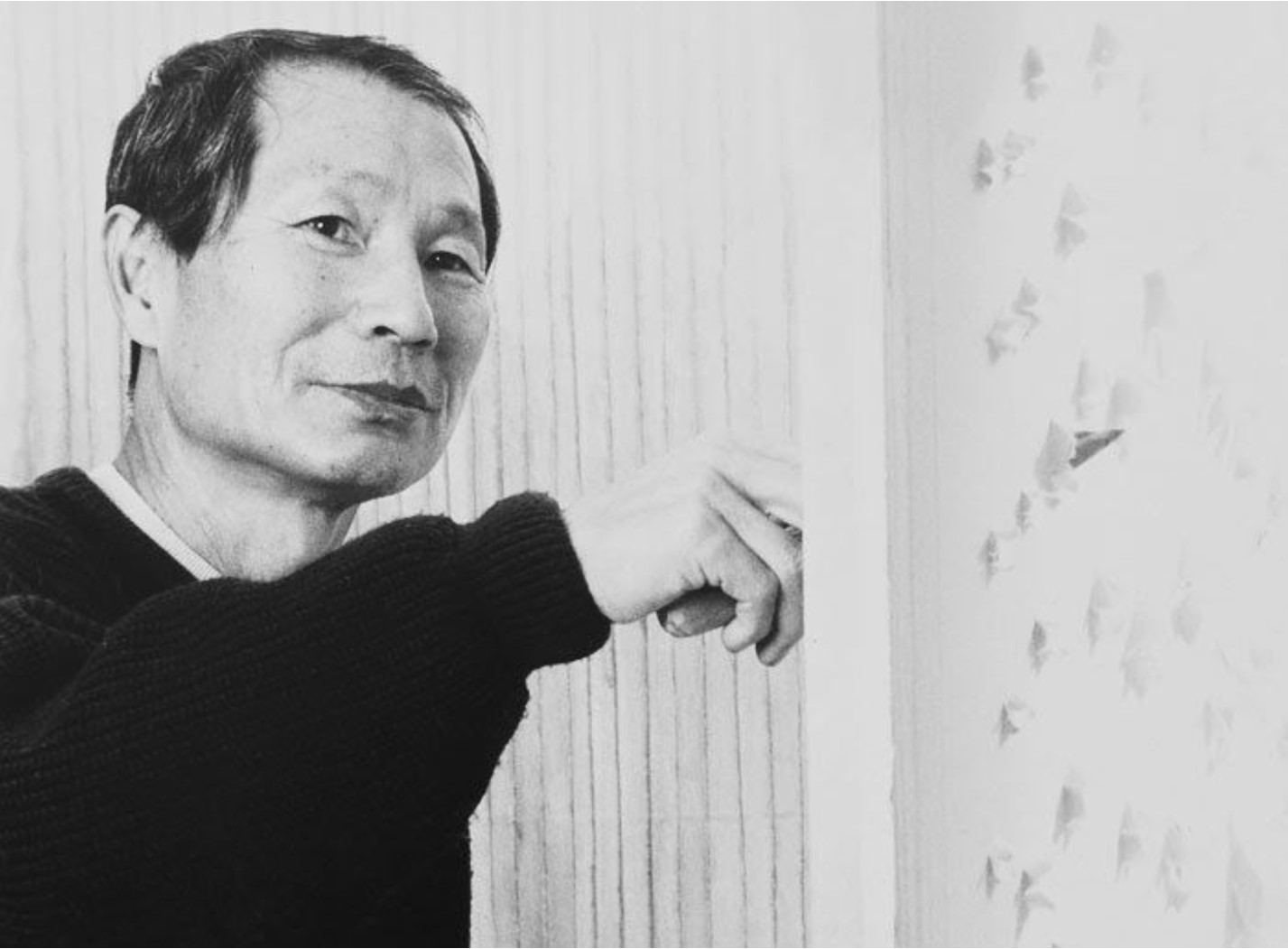
Kwon Young Woo
(b.1926-2013 Korea)
Kwon Young-Woo’s works explore the relationship between traditional materials and abstract expression in the spirit of Dansaekhwa. Trained in traditional Chinese ink painting, Kwon built bridges through his art between Korea's avant-garde and Western movement of Abstract Expressionism. He switched over to working with the medium of hanji Korean mulberry paper during the early 1960s and experimented with its dimensional limits by using his fingers to puncture and scratch thin sheets, then by gluing the layers in multiple laminated stacks of varying thickness to produce three-dimensional relief sculptures. The details of the dynamic three-dimensional forms are all random, creating shadows that are unique by each manipulation. When the viewer takes in his works as a sum of its parts, there is an underlying sense of control to his manipulations that appears extremely well coordinated. In later works, Kwon would apply small amounts onto the torn edges of his works and allow it to seep into the paper over time.
Kwon’s major exhibitions include the Tokyo Biennale in 1965; the 12th Sao Paulo Biennial in 1973; his first solo show at the Jacques Massol Gallery in 1976; the International Contemporary Art show organised alongside the 1988 Seoul Olympics, and a major retrospective at Ho-Am Art Museum, Seoul in 1990. Kwon has been awarded the Artist Award twice from the Korean Minister of Culture; 1998 Korean Artist of the Year; Silver Crown Medal of the Order of Cultural Merit in 2001. From 1978 to 1989, Kwon lived and worked in Paris on sponsorship by the French government. Upon his return to Korea in 1989, he settled in Yogin, Gyeonggido, until his death in 2013. His works are held in many prestigious collections including National Museum of Modern and Contemporary Art, Seoul, Leeum, Samsung Museum of Art, Seoul, and the British Museum, London.
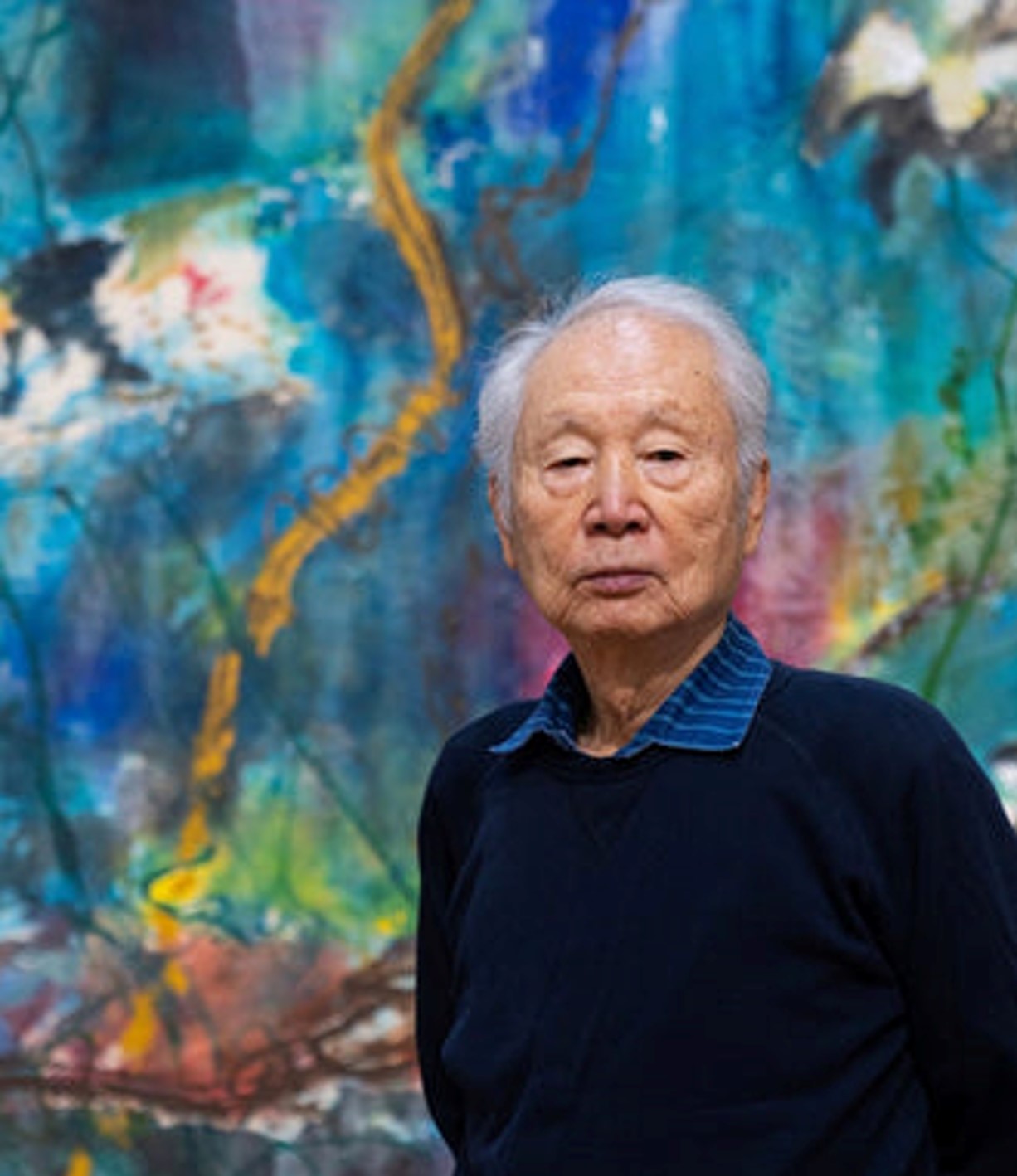
Kim Chong Hak
(b.1937- Korea)
Kim Chong Hak, often referred to as Flower's Painter, is celebrated for his abstract art that emphasizes the inherent beauty of nature. His creative process involves internalizing the joy found in nature and reimagining it onto canvas. In the 1980s, Kim immersed himself in the Seoraksan Mountain, both in theme and living, inspired by its distinct seasonal traits, with a different name for each season. He still speaks fondly of his time in the mountains and his artistic expression of the seasons' colors.
His work has been featured in major international exhibitions and projects, including: the Busan Museum of Art, Busan; Vitality at Galerie Perrotin, Paris; Musée Guimet, Paris;SeMA Nam Seoul Living Art Museum, Seoul; Whanki Museum, Seoul; Ewha Museum,Seoul; Kumho Museum, Seoul.Kim Chong Hak’s work is in the permanent collections of many museums including theNational Museum of Korea; National Museum of Modern and Contemporary Art, Korea;Leeum, Samsung Museum of Art, Korea; Seoul Museum of Art, Korea; and Busan Museum of Art, Busan, Korea.Currently, the Kim Chong Hak Museum is in plans to be built in Busan, whereas the Architect Kengo Kuma participates as a designer.

Choi Myoung Young
(b.1941- Korea)
Choi Myoung-Young is a leading figure in the Dansaekhwa movement and contemporary Korean art. In 1962, he graduated from the Hongik University and co-founded the artist collective “Origin” with Suh Seung Won and Lee Seung Jio. Whilst each artist had a distinctive style, they were united in expanding the boundaries of Korean abstract art.
Choi’s focus was the tactile experience of placing pigment onto the plane while letting go of all other intentions. With form, content and individual expression put aside, the artist was absorbed by subtle characteristics of his own actions. He puts monochrome colors such as black, white, blue, and yellow on flat canvases, and then he approaches conditions of each plane using his fingers, a roller, or a brush on the canvas, or an awl on Korean paper. He seeks for the nature of non-painting in paintings and reveals his life on the plane while exploring the essence of painting. His meditative way of painting creates calm and deep planes, and his emotions and moments are compressed in his works like a diary.
Choi has exhibited extensively in Asia, with numerous solo shows in Japan and Korea. Choi is in museum collections such as the Tokyo Metropolitan Art Museum, Total Art Museum (Seoul) and Korean National Museum of Contemporary Art. In 2016 Park Seo-Bo curated Origin, an exhibition presenting Choi Myoung-Young, Suh Seung Won and Lee Seung Jio. Presented at Galerie Perrotin in Paris, the exhibition focused on the founding members’ artistic collective and their relation to the history of Dansaekhwa, solidifying Choi’s standing as one of the most influential artists in Korean contemporary art history.
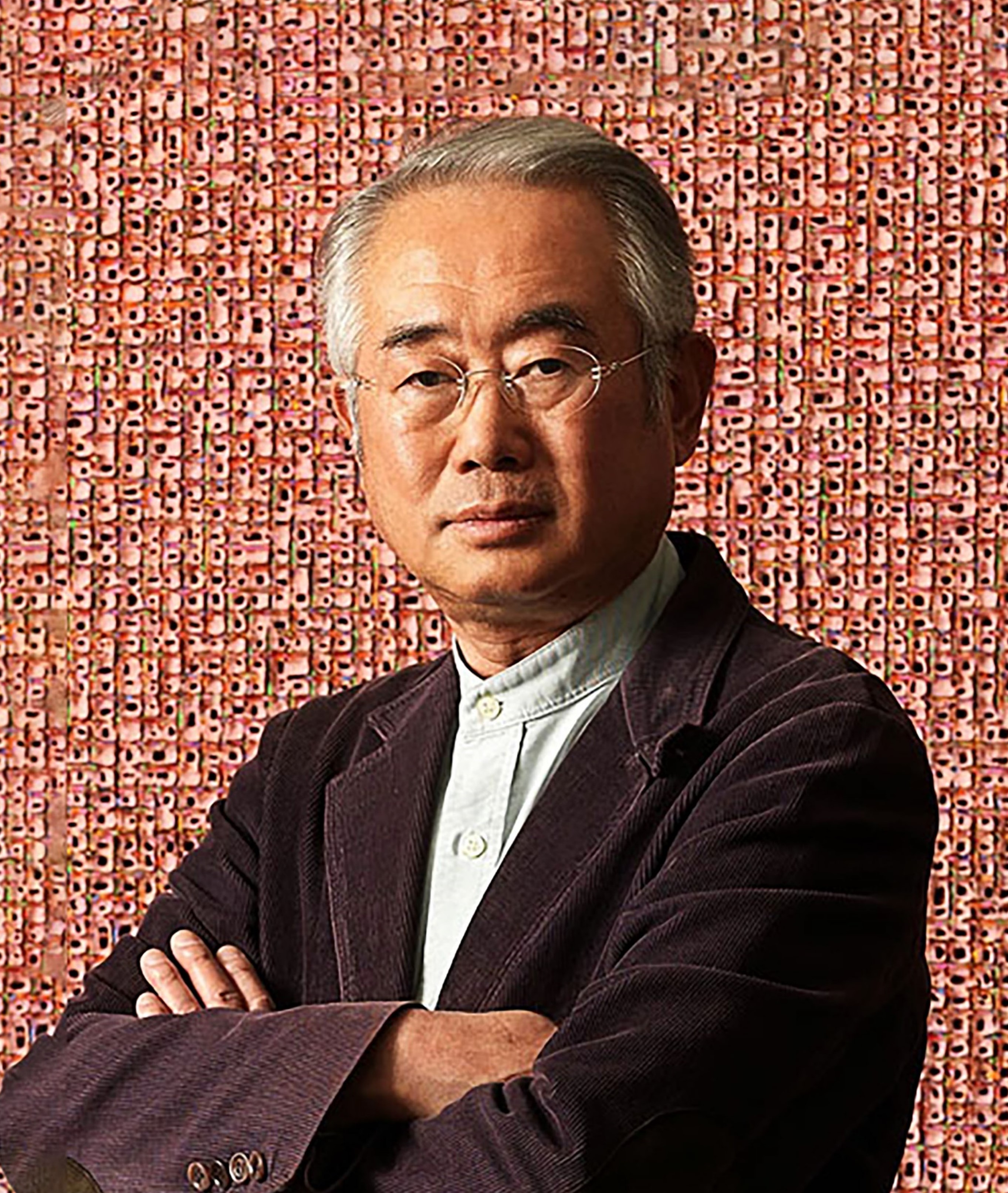
Kim Tae Ho
(b.1948-2022 Korea)
Kim Tae Ho is one of the leading artists of Korean monochrome art since the 1970s. His bold experimentation across media, incorporating traditional handmade Hanji paper within his heavily textured, monochromatic works, has strongly allied his practice with the legacy of his contemporary Dansaekhwa(단색화) painters.
Employing an extremely tedious and careful process of layering heavy brushstrokes on canvas - as much as over twenty times - bulky masses of acrylic paint is built up before being scratched away, revealing a multitude of vibrant colours hidden beneath the simple surface. In the process, not only is vitality and resonance triggered within the rhythm of the colours but countless visual spaces are also formed within the intersecting gridded lines.
Kim’s seemingly ironic and relentless efforts are not futile, instead, they manifest splendid and captivating outcomes, displaying an aesthetic rhythm of moderation and order through the void and the filled, the colourful and the monochrome. Seemingly static and flat in colour, the artworks nudge the audience to double-take, and upon closer inspection, notice the vast colours embedded within which becomes animated with shifting viewing angles.
From 1987 to 2016, Kim Tae Ho served as a professor at the Department of Painting in Hongik University. His works have been collected by The British Museum, UK, the National Museum of Contemporary Art and Seoul Museum of Art, Busan Municipal Museum of Art, Daejeon Municipal Museum of Art, Shimonoseki Museum, Japan and the Museum of Guangzhou Academy of Fine Arts, China among others.
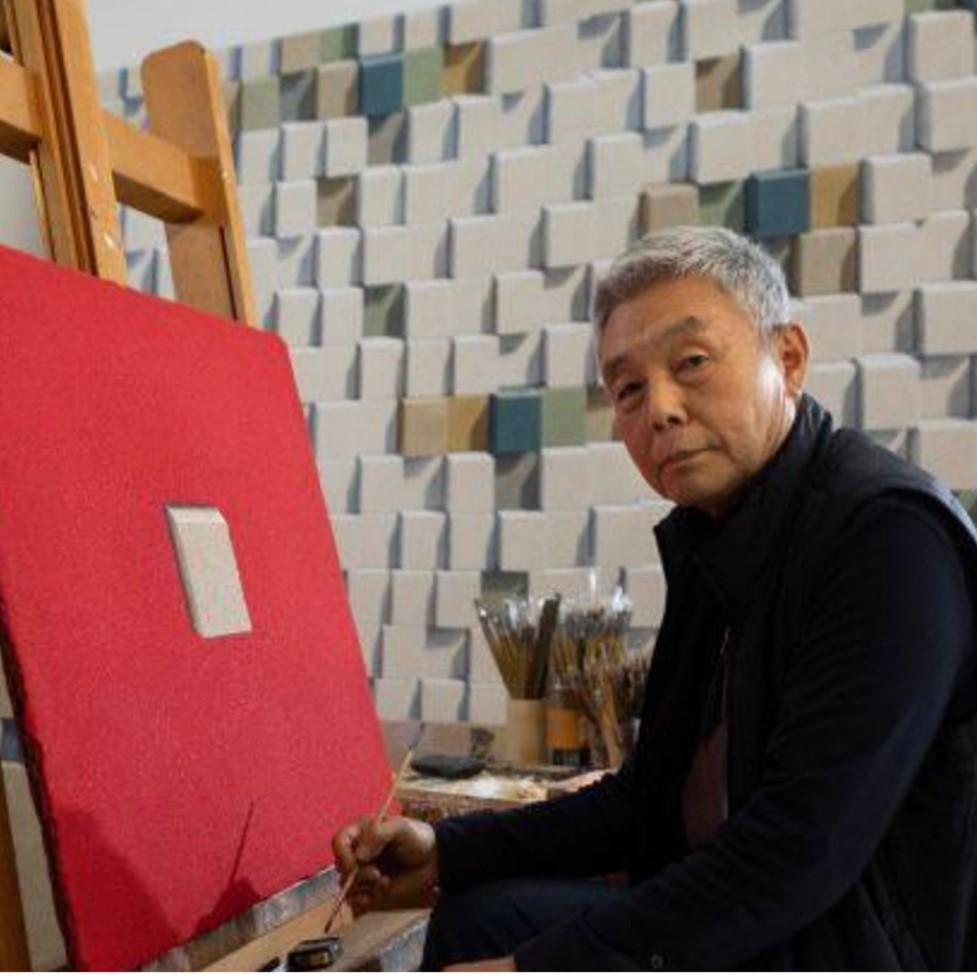
Kim Kang Yong
(b.1950- Korea)
SDuring the 1970s, Kim Kang Yong, along with other contemporary painters, focused on meticulously portraying everyday objects. He skillfully depicted unconventional subjects such as cobblestones, railroad tracks, and wall surfaces, emphasizing the sense of place and its conveyance through art. This approach extended to various subjects, including studio interiors, grassy fields, and urban landscapes, where he highlighted surface textures, surreal compositions, and intricate renditions of painting tools.
Kim's paintings of bricks challenge the viewer's perception of reality. Although they appear remarkably realistic, they are, in fact, virtual representations. The artist employs shading to skillfully create the illusion of bricks, relying on the interplay between light and darkness to convey depth and texture. Shadows play a vital role in understanding his work, as they define surfaces, create divisions, and provide the impression of bricks protruding or receding. Kim's ability to transform ordinary objects and landscapes into unique entities showcases the transformative power of art. His paintings evoke a sense of mystery and fascination, blurring the boundaries between the real and the virtual. Through his artistic exploration, he challenges viewers to reconsider their perception of reality and invites them to discover the extraordinary within the ordinary.
Kim Kang Yong’s first verified exhibition was Première Convergence: Jeune expression 1981 at Parc floral de Paris, in 1981 and had a solo exhibition at Sungkok Art Museum in Seoul in 2020. His art is in museum collections such as Seoul Museum of Art (SeMA) in Seoul and National Museum of Contemporary Art Korea in Gwacheon and among others
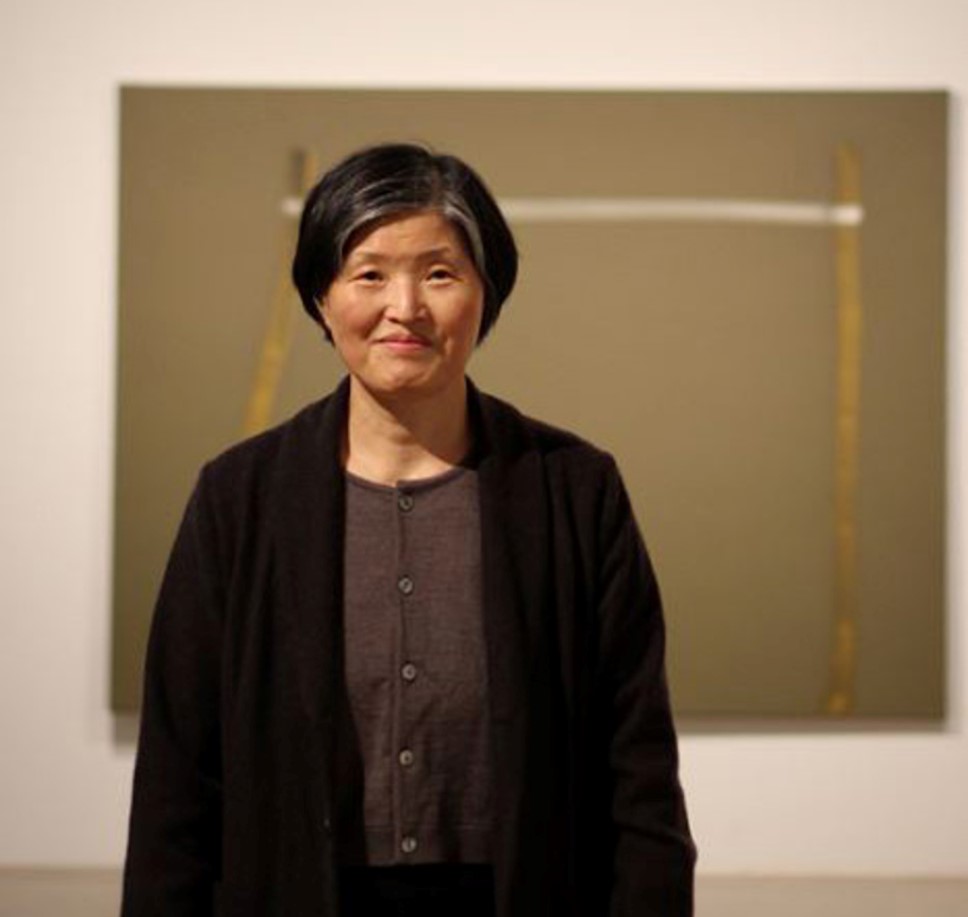
Song Hyun Sook
(b.1952- Korea)
Song Hyun Sook was born in 1952 and grew up in a mountain village in Korea. In 1972 she travelled to West Germany and soon after that she began to draw and to paint. In doing so she often gave voice to her nostalgic memories of her beloved motherland. Over several decades she created paintings with only a handful of motifs or themes: clay pots, silk ribbons draped around posts, or woven textiles hung on a thread.
Song developed both a very distinctive style and a technique that blends elements from the West and the East. She chose to use tempera, a type of paint made by mixing pigments with egg yolk. This technique was widely used in Western painting in the Middle Ages, notably because of the paint’s opaque character. Song, by contrast, uses tempera in a way that is almost transparent: the brushstrokes are economical but accurate. Each brushstroke represents a single movement and there is no room for doubt.
Song Hyun Sook studied at the University of Fine Arts of Hamburg between 1976 and 1981. In 1984 she returned to her homeland for a year to study Korean art history at Chonnam National University in Gwangju. Song Hyun Sook’s work is included in the collections of the following institutes: Kunstmuseum Bern, Kunstmuseum Bonn, Hamburger Kunsthalle, Kunstmuseum Düsseldorf, Leeum-Samsung Museum of Modern Art, Mori Art Museum in Tokyo, Fukuoka Asian Art Museum, Seoul Museum of Art, Gwangju Art Museum and Gyeonggido Museum of Art.
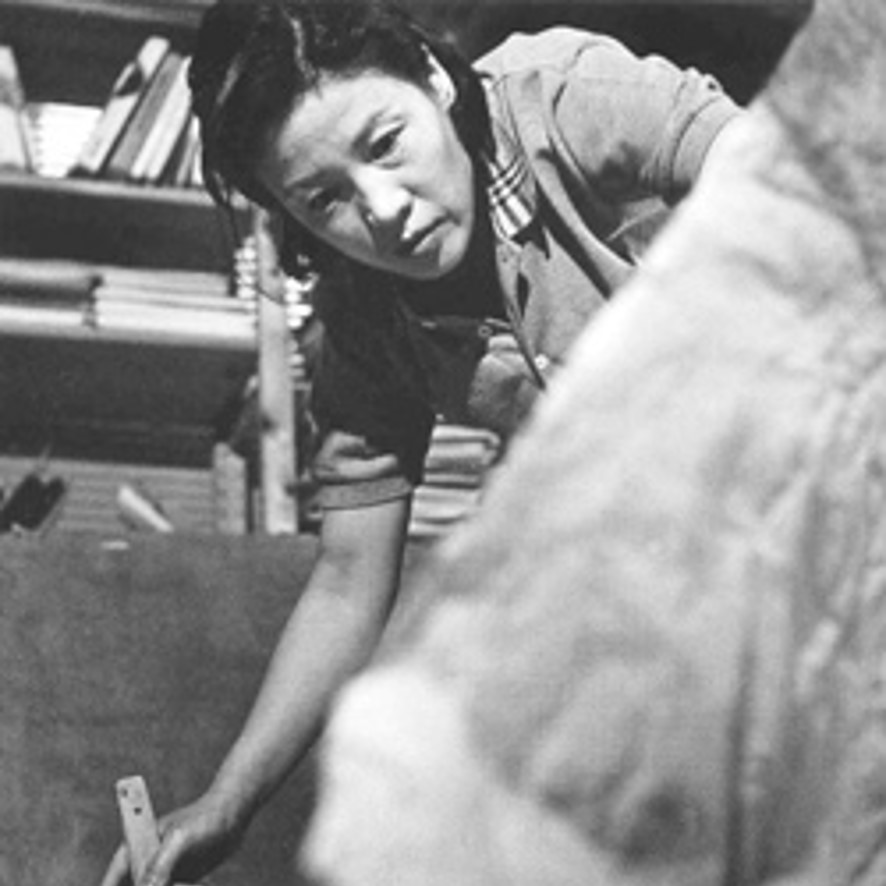
Jung Jong Mee
(b.1957- Korea)
Jung Jong Mee is an artist of remarkable talent, celebrated for her mastery of hanji, a traditional Korean paper crafted from the fibers of mulberry trees. Through her experiments with pigment and paper along with her exploration of color, she is an artist who gives a new language to both form and content of Korean painting.
"Song of Fisherman" was originally a poem written by the poet Yoon Seon Do during the Joseon Dynasty. This poem portrayed a self-sufficient life, in which he escaped from the secular world to immerse himself in the beauty of nature. Yoon Seon Do's poetry has been reborn in the form of a painting by Jung Jong Mee. Her "Song of Fisherman" resembles a poem brought to life with paint. She intentionally employs traditional Korean materials and techniques to convey the essence of this beautifully written Korean poem through her work. In her paintings, she reinterprets the beauty of the landscape in a modern context while using the most traditional techniques and materials available.
In 2023, she retired after serving 15 years as a professor at the Department of Fine Art in Korea University. Her remarkable artistic contributions have garnered prestigious awards, including the Lee Insung Award in 2012 and the Lee Jungseob Award in 2001. Her works have found homes in renowned institutions such as the National Museum of Modern and Contemporary Art Korea, Seoul Museum of Art, Korea University Museum, and Seoul National University Museum, where they stand proudly, embodying her enduring philosophy and artistic excellence.
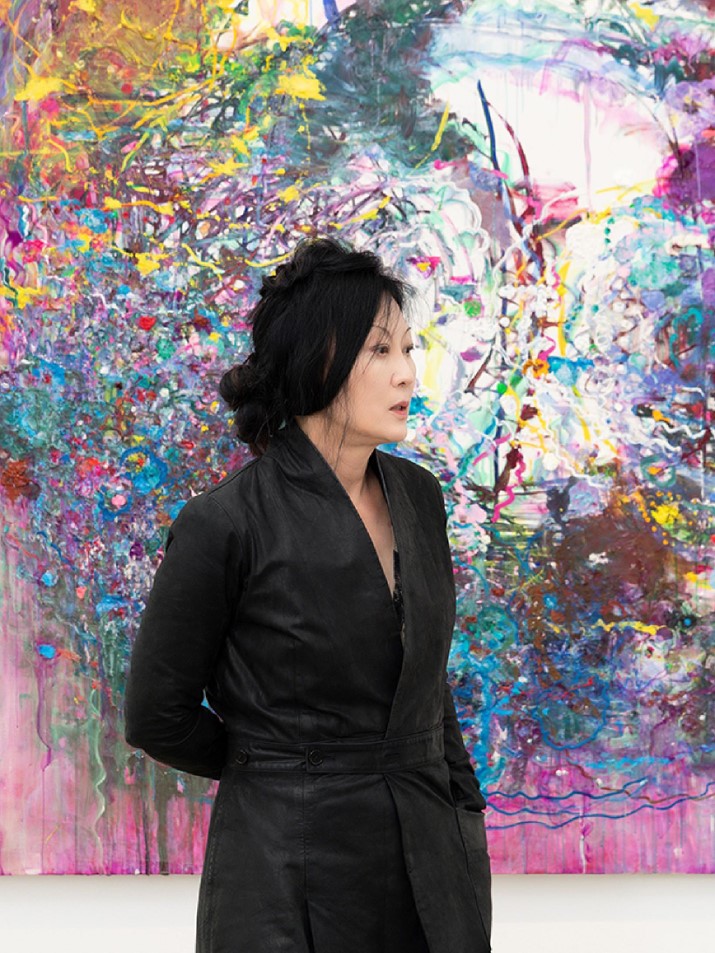
Toh Yun Hee
(b.1961- Korea)
Yun-Hee Toh’s examination of the hidden beauty of the unfamiliar fragments of life and the unrevealed parts of phenomena have driven her artistic practice for the past thirty years. Her work has been connected to intrinsic qualities of individuals in their everyday lives and her paintings are relative to private confessions of the human existence on the things that cannot be seen but felt. Extracted from the core of the prosaic everyday life is a poetry that ponders upon fundamental questions on reality and existence.
Delicately composed line drawings are interwoven with oil paint rendered in dripping technique while the sense of depth is created by pencil drawings and multiple layers of varnish built upon each other resulting in unexpected outcomes. Such layering attempts to capture the instantaneous moment in relation to concepts of eternity. Through her organic subjects of water, sunlight, ice, honey, and dust, her work embodies the emotional and metaphoric depiction that is the façade of our lives or the original landscape of nature. Whereas serenity prevails on the surface, the inner content of her works reveal the pursuit of abounding ideas.
Toh has shown at the Galerie Beyeler in Basel, the Museum of Modern and Contemporary Art Korea, Seoul Museum of Art, Sungkok Art Museum, Kumho Museum of Art, Art Sonje, Amore Pacific Campus and OCI Museum amongst others.
Her works are in the public collections of, among others, the National Museum of Modern and Contemporary Art Korea, Seoul Museum of Art, World Bank, Washington DC, Philip Morris Art Collection, Art Sonje Seoul, Ilmin Museum Seoul, Kumho Museum, Sungok Museum Seoul, Kloster Schonthal Switzerland, and the University of Illinois Chicago
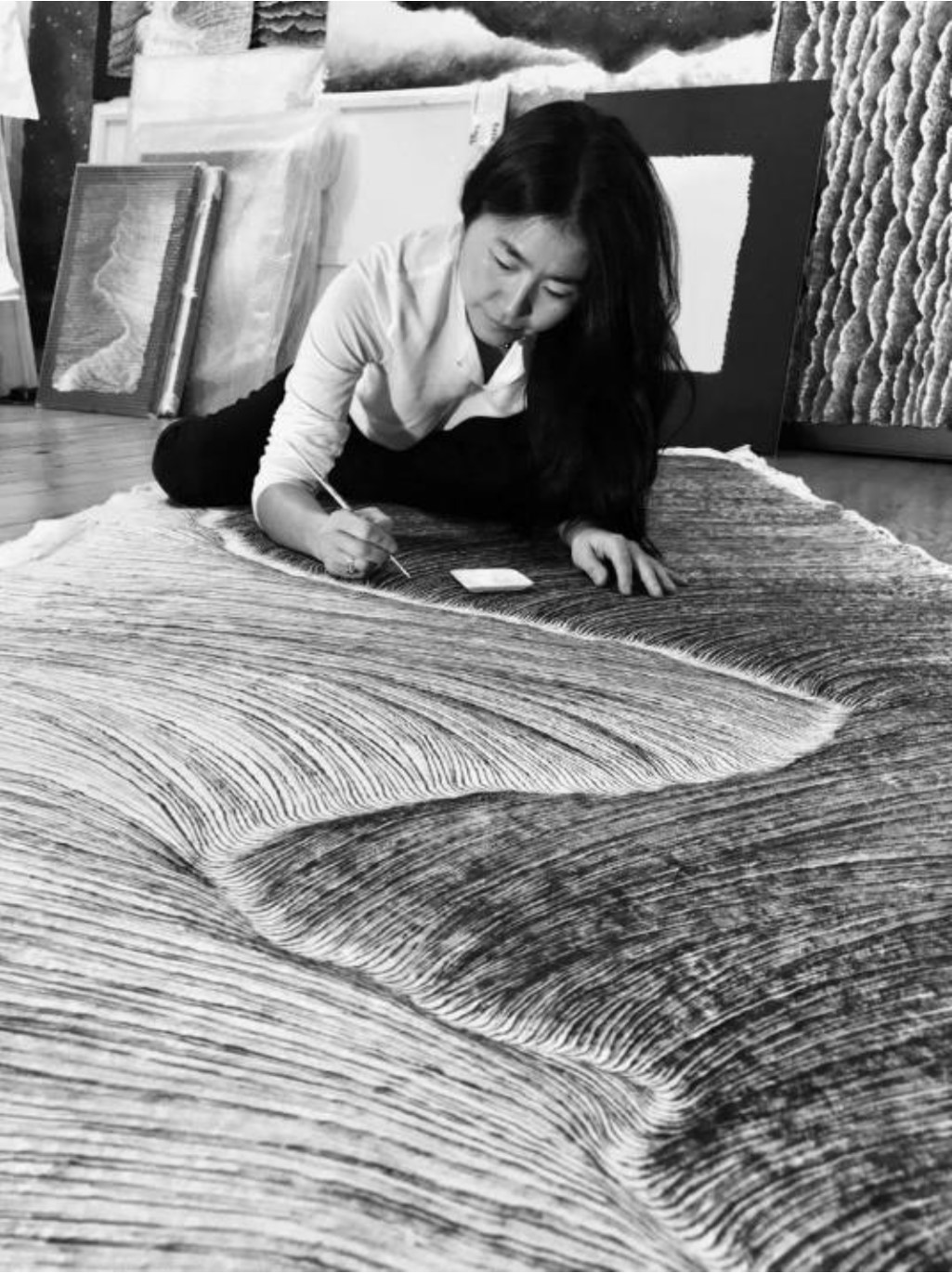
Lee Hyun Joung
(b.1972- Korea)
A graduate in visual arts from Sejong University in South Korea, Lee Hyun Joung develops a series of ink landscapes based on memories of her native country, which she mixes with dream projections of vast, unreal places. The single horizon line is replaced by a multitude of parallel and sinuous lines, which split and accumulate like geological strata or sediment ripples, giving a reading grid to these aerial views without scale or proportion.
Abstracted from the artist's personal journey to have a more universal scope. Almost exclusively blue or black, the ink is also writing, which Lee Hyun Joung deploys on hanji sheets, popular Korean papers made from mulberry pulp. In Korea, hanji paper is traditionally used for calligraphy, wallpapering the walls and windows of the house, and making objects. Mulberry leaves are immersed in water, kneaded, dried, cut and the scraps are reintegrated to shape other leaves of which the artist preserves the irregularity and thickness of the fibres. The resulting support is a material-palimpsest, like shreds of memory accumulated to form a blanket.
Tending towards abstraction, detail is evacuated in favour of the sensation of infinity and the uncertain nature of the element represented : a wave could just as easily be a mountain. Between each uninterrupted line, the blank space left vacant on the paper is not an inactive blank space. It corresponds to the idea, widely held in Taoist thought of emptiness and fullness, that the interval is what makes the connection between visible objects. And it is precisely after a period of silence, points out Lee Hyun Joung, that a line emerges : something happens against a background of nothing. The lines, created to the rhythm of her body, are superimposed like musical staves or the ripples of the foreshore left by the low tide : they swell and recede like a breath. Lee Hyun Joung likens these forms to a path of life, an initiatory walk that is less a matter of a delimited stage than of a cyclical time, the one the Greeks called aiôn. Like the nature (desert, land, sea) to which it refers, each line drawn in ink tends to be generic, i.e.




